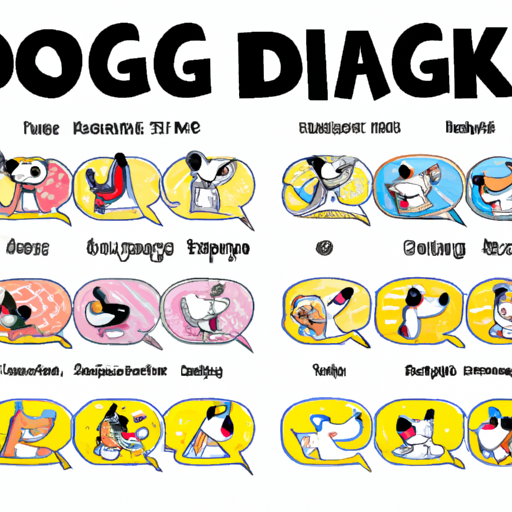As a dog caregiver, you’re likely already familiar with their range of sounds. These sounds are an integral part of their communication – with you and with other dogs. Understanding them can help strengthen the bond between you and your furry friend.
Understanding Dog Sounds
Dogs use a variety of sounds to communicate their feelings, intentions, and needs. Some common sounds include:
- Barking: The most common sound dogs make. The tone and rate can indicate different things.
- Howling: A long, drawn-out sound typically used to communicate over long distances.
- Whining: A high-pitched sound usually indicating distress or need.
- Growling: A low, rumbling sound often indicating aggression or discomfort.
Each of these sounds can vary in intensity and frequency, providing different meanings.
Interpreting Dog Sounds
It’s essential to pay attention to the context in which these sounds occur. For example, a dog might:
- Bark when excited, scared, or seeking attention.
- Whine when they’re anxious, excited, or in pain.
- Growl when they’re threatened, playing, or expressing dominance.
Here’s a simple table to illustrate this:
| Sound | Excitement | Fear | Pain | Attention Seeking | Play |
|---|---|---|---|---|---|
| Bark | Yes | Yes | No | Yes | Yes |
| Whine | Yes | No | Yes | Yes | No |
| Growl | No | Yes | No | No | Yes |
Reading Between the Sounds
The sounds your dog makes aren’t the only way they communicate. Body language plays a significant role too. A wagging tail, flattened ears, or a bared belly can all provide context for the sounds they’re making.
Speaking Dog
Now that you understand the basics, spend some time observing your dog. You’ll start to notice patterns in their sounds and behavior which can help you understand their needs better. Remember, like humans, each dog is unique and they may have their own unique sounds or signals.
Frequently Asked Questions
Q: Why does my dog whine when I leave the house?
A: This could be a sign of separation anxiety. Try leaving a comforting item like a piece of clothing with your scent on it.
Q: My dog growls when we play, should I be worried?
A: Not necessarily. Some dogs growl as a form of playful communication. However, if the growling is accompanied by aggressive body language, it might be a sign of discomfort.
Q: Can I train my dog to stop barking?
A: Yes, with patience and positive reinforcement, you can train a dog to bark less. However, remember that barking is a natural behavior for dogs.
Remember, communication is the key to a strong bond with your dog. The more you understand their sounds, the better you can meet their needs and ensure they feel loved and understood.



